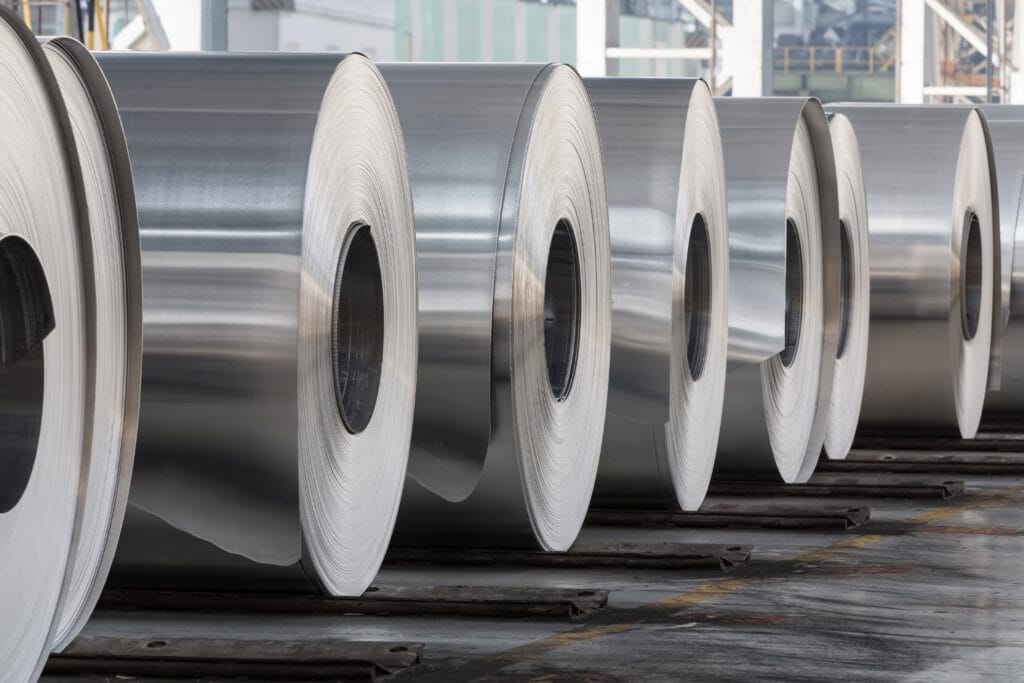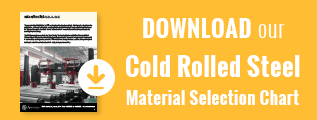To meet unique application needs, there are many different types of steel available, in various shapes, sizes, and finishes. Fully understanding the unique properties and benefits of each type can allow for significant time and cost savings while helping to ensure optimal quality and performance of the end product.
Cold rolled steel and hot rolled steel, in particular, offer different features and benefits, and are best-suited to different applications and industries. The main difference between cold rolled steel and hot rolled steel is the manufacturing process involved in forming each of them.
Download our free guide to compare, contrast and evaluate cold rolled steel by grades, composition and applications below:
Cold Rolled Steel
Cold rolled steel is essentially hot rolled steel that has undergone further processing. When hot rolled steel cools, it is rerolled at room temperature. Strain hardening — by as much as 20% — increases the strength of the final product and ensures a smooth finish. The cold roll process creates steel that is stronger and harder than hot rolled steel, and allows for more exact dimensions. For instance, bars are truly square, with more precise edges and corners. Tubes also have better straightness, and exhibit superior concentricity and uniformity properties.
However, this also means cold rolled steel is limited to only a few shapes, such as round or square. Shaping operations — such as sizing, breakdown, semi-roughing, semi-finishing, and roughing — can create bars, rods, strips, and sheets that are typically smaller than hot rolled products. Cold rolled steel should be used for products requiring optimal durability and tolerance levels.
Hot Rolled Steel
The hot rolled steel process occurs at temperatures over 1,000 °F, which is above the recrystallization temperature for most types of steel. The steel reconfigures itself during cooling, giving it a looser tolerance than the original material. This forming process makes products easier to work with, as the malleability of hot rolled steel allows it to be formed into many different shapes.
Hot rolled steel can also be made in much larger sizes than cold rolled steel. And since reheating the steel is not required, hot rolled steel is generally cheaper than cold rolled steel. Hot rolled steel is ideal for applications in which exact shapes are not required; the steel shrinks when it cools, so there is less control over the size and shape of the finished product.
Hot rolled steel bars can be used in welding and construction applications for I-beams or simple cross-sections like train tracks. The hot roll process is also often used to produce sheet metal.
Hot rolled steel products often have scaled surfaces caused by the cooling down from extreme temperatures. If this presents a problem, scaling can be removed with grinding, blasting, or acid-bath pickling processes. The cooling may also result in slightly trapezoidal forms, which can lead to slight angle distortions. On bar and plate products, slightly rounded edges and corners may also occur.
Learn More
Understanding the unique features and benefits offered by cold rolled steel and hot rolled steel is hugely helpful in determining which process and material will work best for your specific needs.
With more than 35 years of experience in precision metal stamping and assemblies, American Industrial Co. is proud to offer precision metal stamping services for a wide range of industries and applications. To learn more about hot and cold steel rolling and discuss how we can help with your unique application, reach out to the team today.




